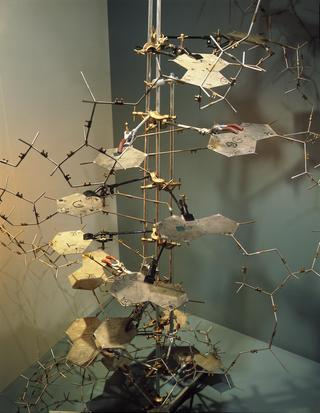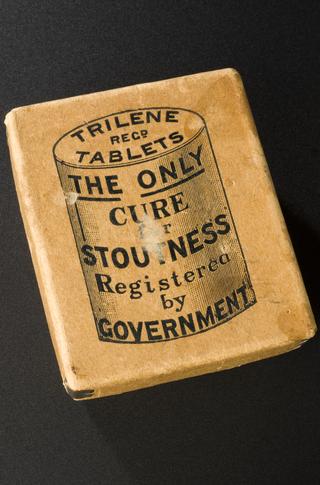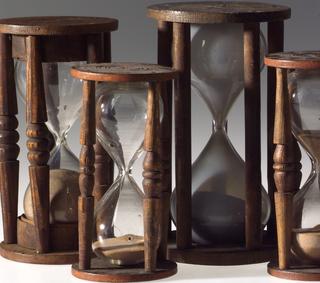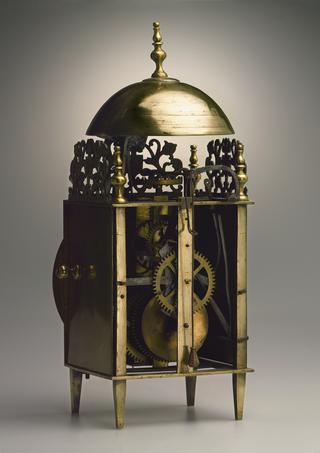
Pocket watch and stop watch
- Made:
- 1890 in Lancashire, Bury and England
Lever escapement pocket watch beating tenths of a second, signed on the back plate 'Wm Williams 32 Rock St Bury. No 19289.' and on the dial 'PATENT No 4762 MARCH 26TH 1890 by WILLM. WILLIAMS BURY', in sterling silver case hallmarked at Chester in 1890, with winding square and hand adjusting square under the back cover. The watch has hour, minute, and small seconds hands, plus a centre seconds hand rotating once every two seconds. A stop mechanism acting directly on the balance wheel and operated by a slide on the side of the case allows use as a stopwatch.
William Williams, of Bury, in Lancashire, made this watch, numbered 19289, in 1890. It is a 'keyless' watch, that is it is wound, and the hands are set, by turning the crown at the top. (Keyless watches were made from 1820, but watches needing separate winding keys were still being made long after that.) This watch has the usual minute and hour hands and small seconds hand, but it also has a centre seconds hand controlled by a 'stop' mechanism operated by a small lever on the side of the case. This hand turns once in twenty seconds and moves in steps of one tenth of a second.
Details
- Category:
- Time Measurement
- Object Number:
- 1916-218
- Materials:
- silver, timer, regulating, free-standing and springs (elastic objects)
- type:
- pocket watch and stop-watch
- credit:
- Mr. Evan Roberts




